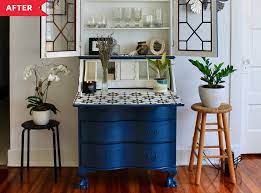In a world of mass-produced furniture and disposable décor, there’s something truly special about giving old, forgotten pieces a new lease on life through the art of upcycling. In this guide, we’ll explore the transformative power of upcycling old furniture, from the benefits and techniques to inspiring ideas and practical tips for success.
Introduction to Upcycling Old Furniture
Upcycling old furniture involves taking discarded or outdated pieces and transforming them into something beautiful and functional. It’s not just about giving old furniture a fresh coat of paint or a new fabric—it’s about reimagining its purpose and potential to create something unique and meaningful.
Benefits of Upcycling Furniture
The benefits of upcycling furniture are manifold. Not only does it reduce waste and minimize environmental impact by diverting items from landfills, but it also offers a cost-effective way to furnish your home with one-of-a-kind pieces. Additionally, upcycling allows for personalization and creativity, giving you the opportunity to express your style and personality through your décor.
Finding and Selecting Old Furniture
When it comes to upcycling furniture, one person’s trash is truly another’s treasure. You can find potential upcycling candidates at thrift stores, flea markets, garage sales, or even in your own attic or basement. Look for solid, well-built pieces with good bones that have the potential to be transformed with a little TLC.
Preparation and Cleaning
Before diving into the upcycling process, it’s essential to prepare your furniture by cleaning and inspecting it thoroughly. Remove any dirt, grime, or old finishes, and assess the condition of the piece for any damage or repairs that may be needed. Sanding down rough surfaces and filling in cracks or holes will ensure a smooth and professional-looking finish.
Choosing Upcycling Techniques
There are countless ways to upcycle old furniture, depending on your style preferences and skill level. Some popular techniques include painting and refinishing, upholstery and fabric updates, and hardware replacement or restoration. Choose techniques that complement the style and condition of your furniture while allowing for creativity and personalization.
Tools and Materials Needed
To upcycle furniture effectively, you’ll need a variety of tools and materials to help you achieve your desired look. Essential tools may include sandpaper, paint brushes, and screwdrivers, while common materials range from paint and stain to fabric and hardware. Invest in quality supplies that will stand the test of time and give your furniture a professional finish.
Step-by-Step Upcycling Process
The upcycling process typically involves several steps, from preparation and priming to painting or refinishing and adding decorative elements. Take your time and follow each step carefully, allowing for proper drying and curing times between coats. Don’t be afraid to experiment with different techniques and finishes to achieve the desired result.
Inspiring Upcycling Ideas
Looking for inspiration to kickstart your upcycling project? Browse online platforms like Pinterest or Instagram for creative ideas and examples of successful upcycling projects. From bold color schemes and intricate patterns to unique hardware and embellishments, the possibilities are endless when it comes to upcycling furniture.
Tips for Success
While upcycling furniture can be a rewarding and enjoyable process, it’s essential to approach it with careful planning and attention to detail. Research different techniques and materials, practice on small projects before tackling larger ones, and don’t be afraid to make mistakes and learn from them along the way. Above all, have fun and let your creativity shine!
Showcasing Your Upcycled Furniture
Once your upcycling project is complete, be sure to showcase your newfound masterpiece proudly. Take high-quality photographs of your furniture in natural light and stage it in a way that highlights its unique features and craftsmanship. Share your creations on social media, in online marketplaces, or even at local craft fairs or flea markets to inspire others and spread the joy of upcycling.
Benefits of Upcycling Beyond Furniture
Beyond the realm of furniture, upcycling offers countless opportunities to reduce waste and promote sustainability in other areas of our lives. Whether it’s repurposing old clothing into new garments, turning household items into DIY décor, or finding creative ways to reuse materials in art and craft projects, upcycling allows us to embrace a more mindful and eco-friendly lifestyle.
Challenges and Solutions
While upcycling furniture can be a fun and rewarding endeavor, it’s not without its challenges. From dealing with stubborn finishes to navigating intricate repairs, upcycling projects often require patience, creativity, and problem-solving skills. Fortunately, there are plenty of resources available, from online tutorials to community workshops, to help you overcome obstacles and achieve your upcycling goals.
Conclusion
In conclusion, upcycling old furniture is a sustainable and rewarding way to breathe new life into forgotten pieces and create something beautiful and unique. Whether you’re a seasoned DIY enthusiast or a first-time upcycler, there’s something truly satisfying about rescuing old furniture from obscurity and transforming it into a cherished heirloom or statement piece for your home.

